Why Do Teenagers Want To Be Influencers?
You may have heard of a recent phenomenon called collab houses. If you haven’t, allow me to introduce you to Hype House.
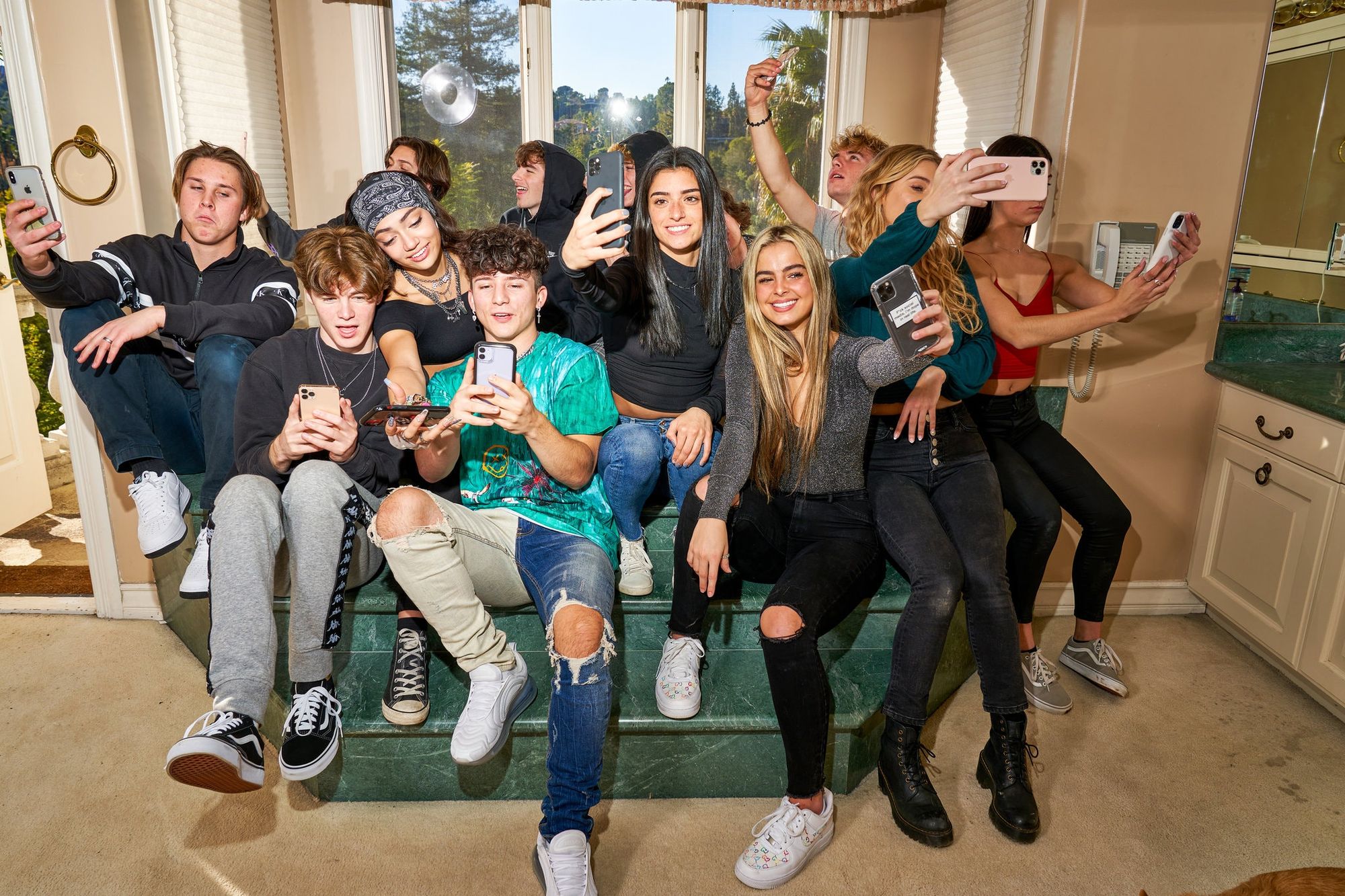
Hype House is a mansion where nineteen teenagers live together and record videos of themselves dancing, performing stunts, and generally doing things that are entertaining to watch. Because their primary platform is TikTok, ages in the Hype House tend to skew younger than most influencers. How young, you ask?
From the NYT article:
The undisputed star of the group is Charli D’Amelio, a 15-year-old from Connecticut known as the reigning queen of TikTok.
TikTok is just the latest social media platform that enables people to make money online. Although there are different monetization strategies, these platforms represent an extremely lucrative career option for those with the combination of luck, talent, and timing to make it big.
One of the stars of the Hype House explains the requirements for entry:

TikTok, Youtube, and Instagram have created a generation of influencers: people with audiences that trust them. While influencers on other platforms tend to be older than those in the Hype House (the average age range for Instagram influencers is 25-34), the career path is similar. Being an influencer has opened up a way for teenagers to make a living.
Consider the results of this poll from The Harris Survey:
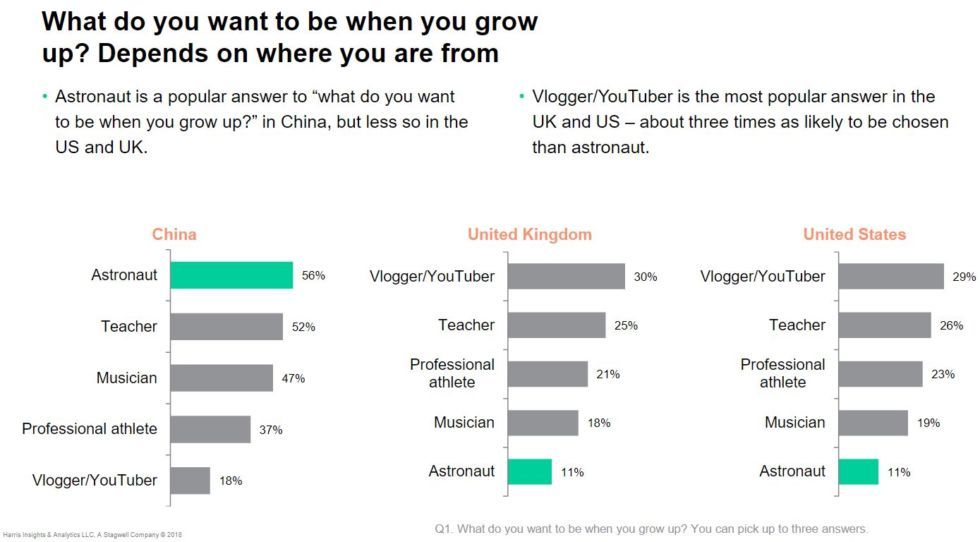
The most desirable occupation among children in the United States is YouTuber. There are a few ways to interpret this survey. The common (and more cynical) interpretation is that this result is a bad thing. After this survey was released, it was met with a flood of negative articles grumbling about “kids today.” At face value, this poll indicates that kids are more interested in a life of fame than one of quiet austerity befitting an astronaut.
And … this is supposed to be surprising? Replace “YouTuber” with “Rockstar” and “2020” with “1960,” and you’ll get the same results. Kids want to be famous - this isn’t new information.
But I think there is something else at work here. The ability for teenagers to join groups like the Hype House represents a new type of job that doesn’t require internships or prerequisites. Just fire up a camera and, if you’re good, you will get attention. The fact that it’s lucrative is just a bonus.
This is where the crux of the issue lies. When people hear about influencers, they tend to be surprised that teenagers are making money online.
It’s not that making money online surprises people; it’s that teenagers can make money at all. Shouldn’t these kids be in school or something?
This is an important cultural blindspot. The belief that teenagers are incapable of producing value is so widespread that we hardly question it. I’m going to explain why the Hype House is a rational career decision for teenagers today.
- First, we’ll talk about some historical context to lay the groundwork for what is considered acceptable work.
- We’ll then discuss why today’s kids want to be YouTubers, given the options available to them.
- Finally, we’ll discuss a few options for the future and what this trend means.
Before we begin, a fair warning: this essay talks about a few controversial topics, including child labor. In case it is not abundantly clear, I am not advocating for child labor. I merely include this section as historical context to paint the picture for why our current system today is so heavily skewed against anything that interferes with a traditional education. With that being said, this is the internet, so I can only assume that my words may someday be mischaracterized and taken out of context. Such is life. We will cross that bridge when we come to it.
Onward! Our story begins a few hundred years ago, in the farmlands of preindustrial England…
Little Tommy does chores
Before the Industrial Revolution, children were an important component of a family’s economic output. If you were born into a rural family, the expectation was that you would help around the farm. A typical day might have included working the fields, tending to livestock, and domestic chores within the house. Since most of the value from these tasks was returned to the household, this form of labor was not considered exploitive or abusive. Instead, it was necessary training for children who would someday take over the family business.
This trend continued during the proto-industrial revolution (before the workforce's consolidation in factories); children as young as four could be found working in a home-based industry like textiles. Literacy rates hovered around 50%, and formal education was not available except for the very wealthy. Most children were receiving education at home, rather than through a formal schooling system. Since education was not seen as a requirement for contributing around the house, the best way to prepare children for the future was to have them start work young to provide for the family and hone their skills.
At the end of the 19th-century, children often contributed up to 40% of a household’s earnings. Having more children was seen as a net positive, and child labor was the consequence of a rational family strategy.
At the turn of the century, labor was being consolidated into factories. The Industrial Revolution was automating industries like metalworking and textiles formerly reserved for small family units. As factories expanded and jobs became available, people began a mass migration into cities. Industrial towns sprung up, powered by coal and the newly invented steam engine. Since child labor was common on the farm, it was only natural that children were expected to work in this new environment. This… turned out to be a bad idea.
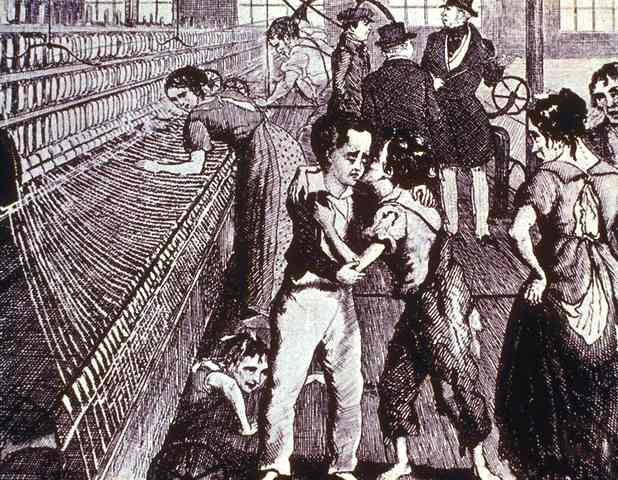
Pictured: Not good and very sad children.
Here is a particularly graphic overview of the situation:
The conditions that children worked under during the Industrial Revolution were morbid. They had long and inflexible work hours. According to many studies, these hours ranged from 14 hours a day or 70 hours per week. The child laborers worked in environments that were unhealthy and dangerous to their physical well being. Many lost limbs, were killed in gas explosions; crushed under machines; and burned. The workers developed lung cancer from poisonous fumes. When their work or machines were not harming them, their supervisors and overseers harmed them. They were beaten, and when they tried to escape from the factories, they were shackled.
Clearly, things needed to change.
Little Tommy goes to school
The Industrial Revolution was a key moment in the history of child labor. It is a somewhat unique case in that the factory conditions first increased demand for child labor, but then ended up being the reason it was eliminated.
The eventual tipping point came from the 1918 Fisher Education Act, which required children to attend school until they were fourteen. Myron Weiner, a renowned political scientist and expert on child labor, believed that "compulsory primary education is the policy instrument by which the state effectively removes children from the labor forces."
Mandatory schooling had a few effects:
- It raised the average age at which children started working.
- It decreased the number of children in the workforce.
This was not a simple transition. Even with the new laws, working-class parents often chose to send their children to private tutors to avoid the rigid syllabus and corporal punishment of English schools. People distrusted formal schooling, believing that the government prioritized things like competitiveness, religion, and imperialism over real education. The government enforced these laws with strict fines, and in the late 1800s, fines for truancy (missing school) were second only to drunkenness.
Despite these hurdles, compulsory schooling stuck. Today, the acceptance of compulsory primary schooling is a legitimate social objective of countries. 186 nations have ratified the 1989 United Nations Convention on the Rights of the Child, making it one of the most widely adopted conventions. Universally, we have agreed that children should remain in school until well in their teenage years.
The implications of this are worth considering.
Little Tommy … goes to grad school?
Mandatory formal education has redefined childhood. In this new definition, you remain a child as long as you are in school. This has created a kind of suspended childhood in which children are removed from the job market to receive education. Let’s discuss what this means.
The social customs surrounding schooling are powerful. From the time children can walk until their late teens, their days revolve around school. Primary and secondary schools create an environment where children learn to socialize, receive meals, and learn the basics across various topics. Education provides significant benefits, including prosocial behavior and higher lifetime earning potential.
However, it’s worth digging into this more deeply. Compulsory schooling was originally introduced as a way to remove vulnerable children from the labor market. At the time, this legislation was needed because children were being exploited by factories that relied on cheap labor. Adult wages were low, and children's contributions were necessary to ensure a basic living standard.
In America today, conditions are different. Real wages have risen. Both adult parents, not just the men, are expected to contribute to the household. Employers no longer believe that children's low-cost labor is the most efficient way to keep costs down, instead choosing to invest in technology or a few skilled workers. The average family size has decreased significantly, leading to a larger investment in individual children's wellbeing.
The fact that K-12 education remains so widespread is a cultural artifact. We know that moving children through a highly structured system based on age is not the most effective educational approach. Project Follow Through, the most extensive U.S. Federal Government study on education ever conducted, determined that a method of learning called Direct Instruction (DI) significantly outperformed other systems. Direct Instruction is a form of skill-based learning, where students move through the system based on their ability rather than their age. This study's results were mostly ignored, citing that the costs of DI were too high and that it stifled teacher creativity.
Even if you aren’t sold on the idea of Direct Instruction, it’s worth reexamining the belief that traditional school is the best way for children to learn. Alternative approaches to education like Montessori schools group children based on age range and prioritize large blocks of unstructured time for activity. This alternative approach has created successful entrepreneurs, including Jeff Bezos, Sergey Brin, and Larry Page.
We also know that enrollment rates in tertiary education continues to rise. The default decision for most graduating seniors is to attend college, despite shocking growth in student loan rates. The ratio of people enrolled in college has nearly doubled since the 1970s.
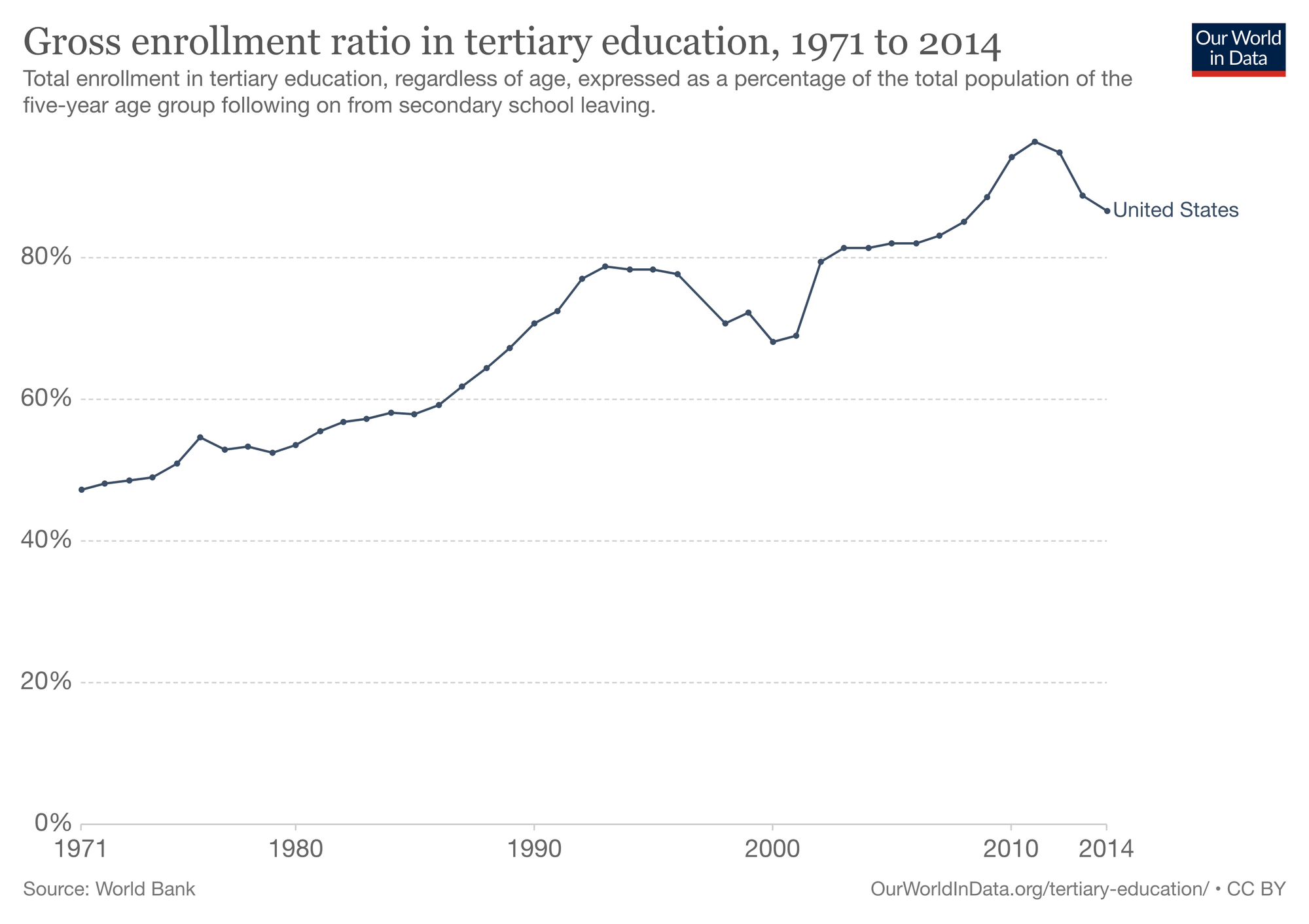
Teenagers today are stuck between a rock and a hard place. The cultural pressure to “attend a good college” is strong. 65% of jobs require post-secondary training. The total student loan debt in the United States has reached over 1.5 trillion dollars.
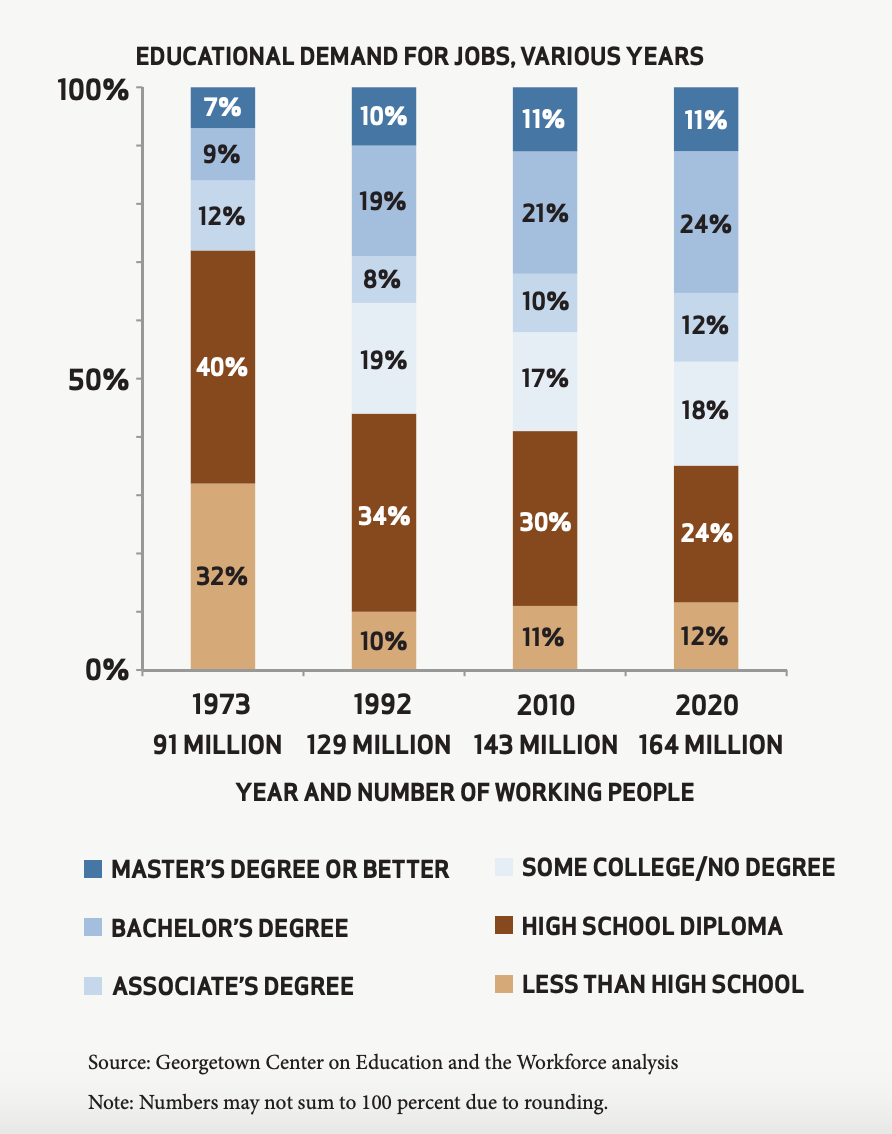
The tail is wagging the dog.
Our obsession with formal education has created a system that is saddling our younger generations with debt. In a capitalist society, this creates a generational problem. Younger people cannot access the capital necessary to build new institutions and keep the growth engine running.
Although there is no law requiring teenagers to continue receiving education after high school, the increasing job requirements effectively create a system where post-secondary education is mandatory. Because of the historical background surrounding education, choosing to remain in school is a signal that you remain a child, unable or unwilling to participate in the labor force. The extension of education is infantilizing adults who remain bystanders in the economy until well in their twenties.
Young people who do look for jobs are often blocked by well-meaning but misguided policies that limit the number of hours a student may work. In certain careers, the only options available for students are often unpaid internships or similarly reduced roles.
Little Tommy makes a YouTube account
We’ve gotten ourselves all twisted up. It’s not that we don’t let teenagers work because they can’t; teenagers can't work because we don’t let them.
On the internet, these regulations don’t exist, which is why we’ve seen a proliferation of young and successful content creators. There are no education requirements to become an influencer, blogger, or social media celebrity. Given the alternatives, these careers represent a lucrative choice. Children and teenagers making money on social media are not an anomaly; they are a return to a previous culture.
Today, having a social media following represents a viable career path. Still, it’s only because the alternatives are so dire that we’ve seen the level of obsession present among young people. Given a choice between attending college for ten years to maybe become an astronaut or making money in a house with your friends, the decision is clear.
What to do about it?
Without going into the nuts and bolts of specific policy, I think there are a few actionable steps that we can take today to address the issues caused by overeducation. Broadly, I think there are three aspects of education that need to be considered when discussing any replacement for the traditional system:
- How to prove you’re educated
- How to pay for education
- How to decide what to work on
Replace stringent education requirements with skill-based alternatives.
Eric Weinstein has proposed introducing a college-equivalence degree (CED) as an alternative to a four-year education. This idea is in line with The Thiel Fellowship, which offers a $100,000 grant for talented students to drop out of college. These programs are promising, but they don’t scale well. To carry weight, prestigious programs need to remain exclusive, which naturally limits the number of people they can accept. However, these programs act as a kind of psychological trojan horse. Removing the most talented students from the academic system disrupts the status game that higher education has become. If all of the best students choose to drop out, colleges will need to offer better outcomes to attract students.
I’ve discussed the idea of skill-based credentials before, and I think we have a long way to go here. In many creative industries, having a portfolio of projects is a stronger signal than a degree. The expansion of this trend to other industries is just beginning, but I’m optimistic.
Some examples of public credentials I come back to:
- Self-published essay (e.g., Principles of Effective Research by Michael Nielsen)
- Sponsored report (e.g., Roads and Bridges: The Unseen Labor Behind Our Digital Infrastructure by Nadia Eghbal)
- Proof-of-revenue (e.g., Make something people want and sell it)
- Endorsement (e.g., Emergent Ventures Fellowship)
Privatize the student loan crisis by transferring the responsibility from the government to institutions
Policy decisions in the United States have created a system in which it is nearly impossible for students to discharge their loans, even when filing for bankruptcy.
This decision, combined with the ability to receive essentially unlimited loans for education, has dramatically increased tuition prices while real wages have fallen.
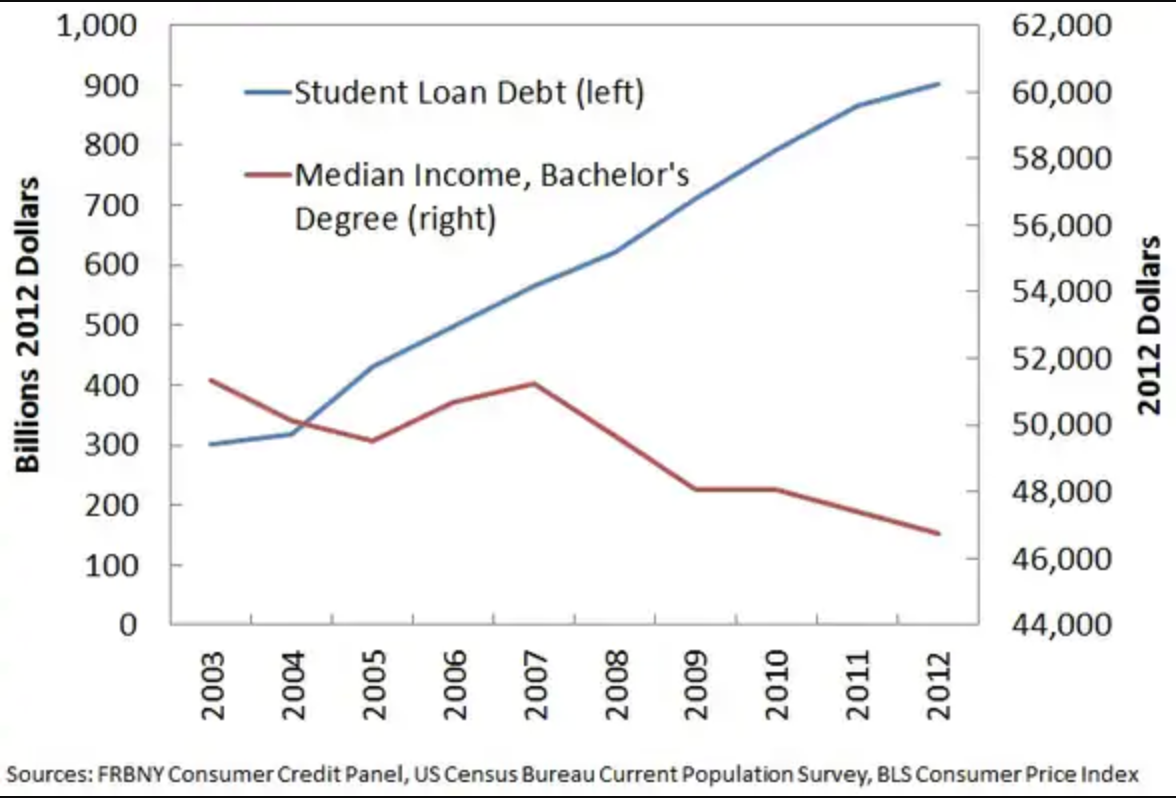
Academic institutions should be held financially accountable for the success of their students. Instead of steering prospective students towards degrees that are unlikely to provide a meaningful rise in income, colleges will need to consider which areas are likely to provide a return on investment. This type of localized accountability shifts the incentives for colleges. If they are on the hook for students that aren’t unable to pay back loans, it is unlikely that they will continue to offer degrees with little to no real-world value.
Institutions like Lambda School are already moving in this direction, replacing loan-based tuition with an Income Share Agreement. In this model, the college receives money only after the student has been employed, and the maximum payout is capped at a predetermined amount.
Encourage alternative career paths
Much of our current system is designed to minimize the social stigma of certain career paths. Going to college is as much a social decision as it is a financial one.
Becoming a teacher or doctor represents a certain social class, despite the economic realities of the situation. Plumbers often have comparable earning potential to prestigious professions like doctors and teachers, yet the social implications of such a career prevents people from considering them. I highly recommend this essay from Scott Alexander for a thought-provoking read on the differences between social and economic class.
In addition to vocational careers, there is little tolerance today for unstructured career paths. Some of the most accomplished inventors and entrepreneurs in history were able to accomplish incredible things while employed in jobs that were unimpressive on paper. Einstein was a patent clerk when he had his miracle year. Countless technology founders are college drop-outs, including Steve Jobs and Bill Gates.
In summary: it’s okay not to go into finance, law, or medicine.
I started this essay based on a question I had about social media as a career path. During my research, it became clear that social stigma plays a bigger role than most of us realize when we talk about “the student debt crisis.” The implications of an entire generation being saddled with debt are large, and not only in ways that show up on financial statements.
If you’re worried about teenagers obsession with careers in social media, consider why this is the case. It’s not for lack of ambition — a majority of Gen Z content creators say that their motivations are driven by the opportunity to make a difference in the world.
The kids want to work - we need to get out of their way.
Sunday Scaries is a newsletter that answers simple questions with surprising answers. If you enjoyed this issue of Sunday Scaries, please consider sharing it with a friend.